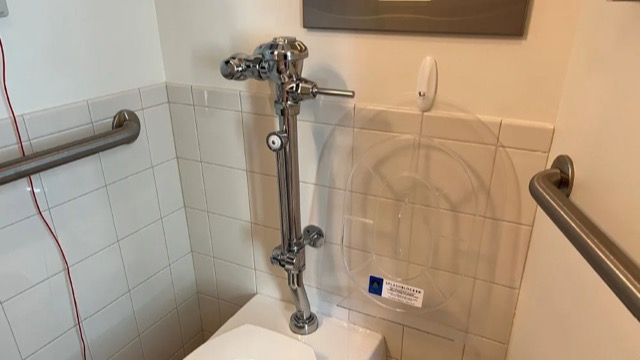Q&A: Real-World Data on Protecting Oncology Nurses From Toilet Plumes
Seth Eisenberg, ASN, RN, OCN, BMTCN discussed the results of a real-world trial of Splashblocker, a toilet seat cover designed to mitigate exposure to toxins.
Seth Eisenberg, ASN, RN, OCN, BMTCN

Oncology nurses come into contact with harmful toxins found in patients’ urine and released by aerosol toilet plumes on a regular basis, depending on cancer treatment types.
Oncology Nursing News spoke with Seth Eisenberg, ASN, RN, OCN, BMTCN, about Splashblocker, a reusable and removable toilet cover designed to mitigate the effects of these toxins, which has shown efficacy in the clinical setting.1 Eisenberg was a lead investigator in both the real-world and laboratory studies on the toilet cover’s efficacy.
What is Splashblocker, and how does it impact oncology nurses?
Well, there’s been an ongoing concern over, I’d say, the decades about potential exposure in oncology, particularly to drugs that are excreted in urine. [An] oncology nurse actually came up with the concept of designing a solid, removable, and reusable barrier that could actually prevent or minimize the amount of exposure of the aerosols that come out of a toilet.
Image courtesy of Katie Bourke

How did you approach collecting real-world data to determine Splashblocker’s efficacy in the clinical setting?
We designed a large-scale study as a multi-center study, and we ended up enrolling 15 different hospitals across the country. And one of the things that I really thought was important if we were going to do this kind of clinical study was to have a lot of diversity in it. And so we specifically targeted institutions of varying sizes.
We looked at institutions on the east coast, the west, the south, and all the way up to Minnesota, so the north as well. And then I also wanted to look at the difference between HEPA-filtered floors and non–HEPA-filtered [floors].…And then we wanted to see, well, does it make a difference which floor we’re on because of water pressure and things like that. So we did a variety of different floors.
Did observing different types of bathrooms reveal any differences at baseline?
There was no statistical difference in the elevation of the buildings. What we did find, however, [was] that there was definitely a difference in the design of the ventilation in the bathrooms.
Older facilities tended to be less efficient at removing aerosols from bathrooms.…We found several bathrooms [where] the ventilation was totally nonfunctioning.…One bathroom we measured…we measured it uncovered first, and then we go back in, usually about 15 minutes later, and measure the ambient to make sure it went back down to baseline.…It didn't go down. It never went down. And we actually opened up the door and propped it open…and even after 45 minutes, that bathroom still had a high concentration of particles, because the vent in the ceiling was not doing anything at all…
HEPA-filtered bathrooms tend to have fewer ambient particles. So it means, when you made a baseline…it was statistically significantly lower.
How did these varying levels affect outcomes of Splashblocker?
Once we put the cover on, all bets were off with a Splashblocker in place. It didn't matter if we were in an old bathroom or new bathroom, if we were in HEPA-filtered, non–HEPA- filtered, negative pressure rooms or positive pressure rooms; the reduction was still about the same.
How did these real-world results overall compare to previous lab research?
What we found is similar to what we saw in the laboratory.…If we take those outliers out of the overall [analysis]… it reduced the amount of particles by 99%, so basically… it was 99% reduction, which is almost as if the toilet was never flushed at all. It's like it never happened.
This transcript has been edited for clarity and conciseness.
Reference
- Eisenberg S, Cai C. Reducing the particles generated by flushing institutional toilets. Part II: Assessing a portable and reusable toilet cover in U.S. hospitals. J Occup Environ Hyg. 2024;21(12):847-856. doi:10.1080/15459624.2024.2398752



